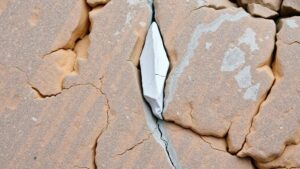How to Recognize Gold in Stream Sediment Layers
How to Recognize Gold in Stream Sediment Layers
Gold prospecting in stream sediments is a pursuit that draws both amateur explorers and seasoned miners alike. Understanding how to identify and evaluate gold in these environments can lead to successful prospecting. This article will provide a detailed guide on recognizing gold in stream sediment layers, equipping you with the necessary knowledge to embark on your gold-seeking journey.
The Geological Context of Gold in Stream Sediments
Gold is often found in alluvial deposits, which are sediments that have been transported by fluids, primarily water. Stream sediments can accumulate gold particles that originate from upstream rock formations containing gold ores. The process of erosion and hydraulic action breaks these ores down, allowing their gold content to be dispersed throughout stream beds.
- Gold is typically found embedded in a mineral called quartz.
- Fluvial transport facilitates the distribution of gold particles downstream.
Characteristics of Gold in Sediments
Recognizing gold within stream sediments involves understanding its distinctive properties. Gold is unique in several ways:
- Ductility and Malleability: Gold can be shaped and formed without breaking, often resulting in distinct nuggets or flakes.
- Weight: Gold is heavy (specific gravity of about 19.3 g/cm³), making it settle quickly in sediment.
- Color and Luster: Gold appears yellowish with a metallic shine, distinguishing it from other minerals.
- Non-reactivity: Gold does not tarnish or corrode, maintaining its appearance over time.
Identifying Gold in Stream Sediment Layers
1. Understanding Stream Zones
Identifying optimal locations within a stream is crucial for finding gold. Streams often have different zones where sediment types vary:
- Headwaters: Typically fast-flowing, these areas have less gold due to high energy that prevents larger particles from settling.
- Middle Reach: This section offers a balance of sedimentation and erosion, creating potential gold traps.
- Downstream Placer Deposits: These areas typically accumulate heavier materials, making them prime locations for gold.
2. Techniques for Prospecting
Utilizing specific techniques can enhance your ability to locate gold in stream sediments:
- Panning: The classic method involves using a shallow pan to wash away lighter sediments, allowing heavier gold particles to settle at the bottom.
- Sluicing: A sluice box can capture gold while allowing sediment to wash over it. Effective for separating gold from larger volumes of material.
- Metal Detectors: Advanced technology can help locate gold nuggets that are deeper within the alluvial deposits.
Environmental Considerations and Best Practices
Although prospecting can be rewarding, responsible practices are essential for minimizing environmental impact:
- Obtain Permits: Always check local regulations regarding gold mining and obtain necessary permits.
- Avoid Disturbing Fish Habitats: Be mindful of local ecosystems, ensuring activities do not adversely affect wildlife.
- Leave No Trace: Restore any areas you excavate to their natural state once finished. This preserves the environment for future prospectors.
Conclusion
Recognizing gold in stream sediment layers requires understanding not only the properties of gold itself but also the geological and environmental factors at play. By becoming familiar with stream zones, adopting effective prospecting techniques, and adhering to responsible practices, prospectors can maximize their chances of uncovering this precious metal. Each nugget of gold found is not just a financial gain but a connection to the rich history and geology of our planet. As with any exploration endeavor, knowledge and respect for nature are paramount.
Actionable Takeaways
For those interested in gold prospecting, consider the following actionable steps:
- Research local stream geology to identify potential gold regions.
- Practice panning techniques in a controlled environment before heading out.
- Invest in a quality sluice box or metal detector to enhance your search.
- Stay informed about local regulations and best practices for environmental stewardship.

